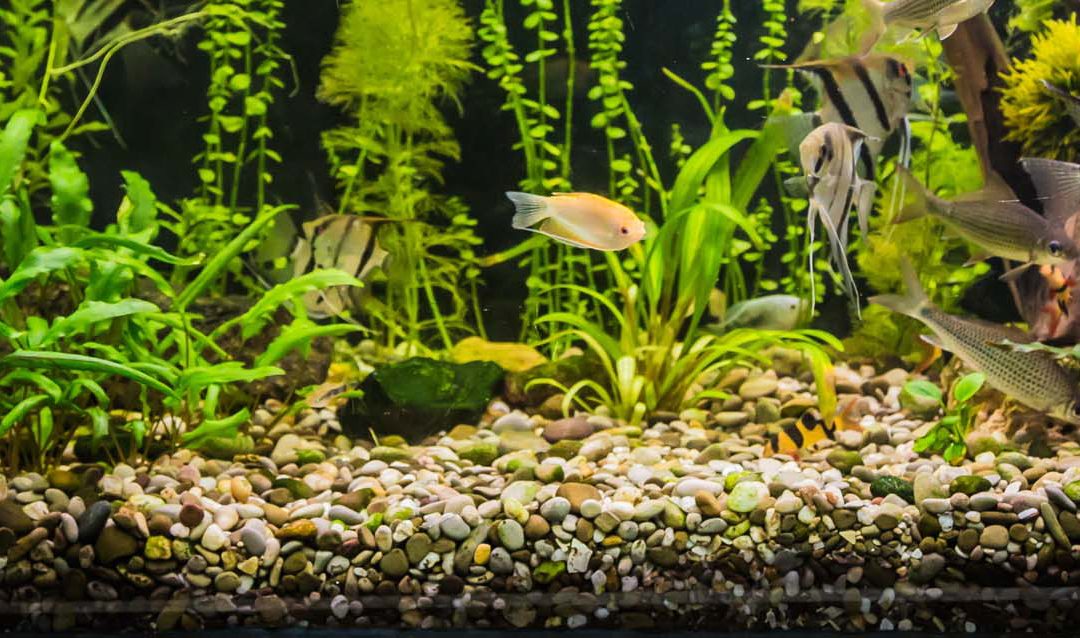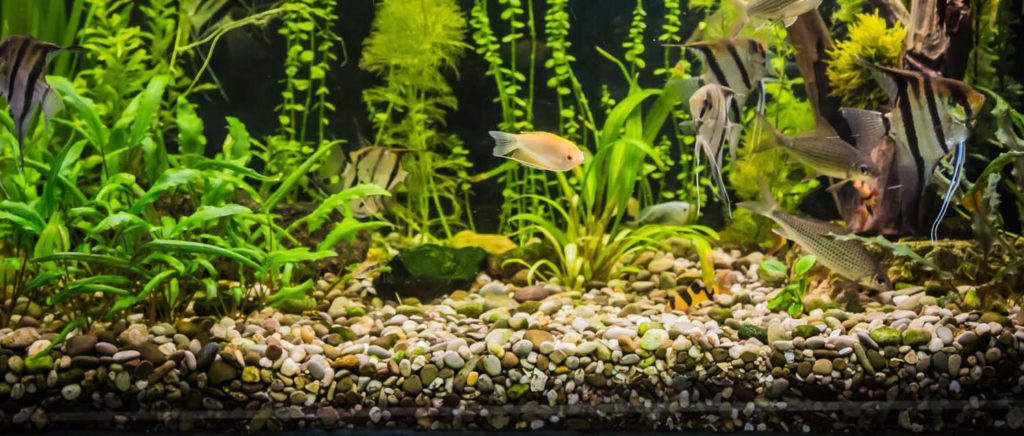
Plants are a great addition to nearly any freshwater set up. They provide natural hiding places for fish, remove waste from the water, and add natural beauty to the aquarium. There is a huge range of difficulty between the many species of plants that we carry at The Ocean Floor and it’s good to know what you are getting into before you start. In general, the three main variables in keeping aquarium plants are lighting, substrate, and nutrition. The difficulty level of keeping individual species depends on their needs in these categories.
Table of Contents
Lighting
All plants need some light to survive as they produce energy through photosynthesis, but there is a lot of variance on how much and what kind of light. Light that has been filtered through glass (like sunlight through a window or ambient room light) does little to nothing for plants, but can help fuel algae growth.
Low quality LEDs or fluorescent lights can be enough for some plants, like cryptocorynes, java fern, anubias and mosses to grow, but will not be enough to support species with medium- to high-light needs. It is also important that we provide full spectrum lighting, generally with emphasis on the reds and blues instead of the pure white lights that are generally used in fish only tanks. To differentiate, lights that are specifically meant for plant growth are generally labeled as such. Some the best options being the full spectrum AI Primes and Kessell Tuna Suns.
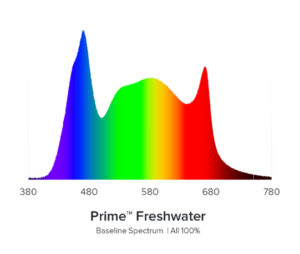
Let an Ocean Floor staff member know what your goals are, and we can help you find the ideal lighting setup for your tank.
Substrate
Beyond lighting, where the plant is placed is one of the next most important things. Aquatic plants can be broken into three categories: stems, rosettes and rhizomes.
Stem plants are, by far, the most common aquarium plants. They are generally fast growing and most require at least medium light. This group includes the long time staple anacharis as well as alternatheras, ludwigias, rotalas, and many of the small carpeting plants like baby tears and monte carlo. Most stem plants aren’t picky about the substrate because they receive nutrients directly out of the water column and can be fertilized with liquid fertilizer. That being said, many are fairly fragile and still prefer a sandy bottom to one of gravel. One of the benefits of stem plants is that, in addition to their fast growth, they can be cut after a certain amount of growth and the tops of the plants can be replanted with the original plant surviving as well.
Rosette plants cannot be propagated by cutting and receive their nutrients through their root systems, making choice of substrate very important. This group includes crypts, swords and sagittaria plants as well as aponogetons. All of these prefer sand, dirt, or clay substrate and do best with substrate that is specifically created for planted tanks, like Eco Planted by Carib-Sea. If nutrient rich substrate is not an option, using root tabs with a sandy substrate is another option. The amount of fertilizer will vary greatly as plants depending on their rate of growth. Plants like swords and apongetons will grow very quickly and require a lot of food. Crypts, on the other hand, are very slow-growing plants and require less.
Finally, rhizome plants are the easiest when considering substrate; they don’t want any at all. Anubias, Java fern, bucephalandra, and bolbitis all need the rhizome to be in the water column or they risk rotting. While the roots can be placed in soil, it’s preferable to attach them to wood, rock or other decoration where they can be in direct contact with the water column and not covered in substrate.
This makes them good plants to hide under for fish like bettas that like to swim higher in the water column. Mosses and subwassertang can be treated in this manner as well despite not having any rhizomes or roots at all as they can also be attached to wood. Floating plants are also water column feeders, but nearly all are illegal in Arizona with the exception of vines like pennywort.
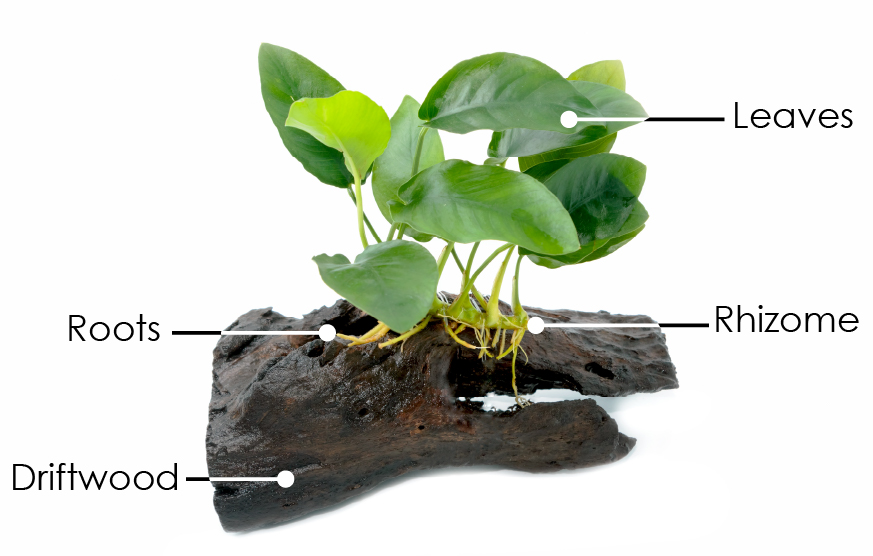
Nutrition
The primary source of energy for all plants is light, but other nutrients are also necessary. The most basic of these is nitrogen, which is provided by the fish themselves through the nitrogen cycle. Other nutrients need to be provided through supplemental dosing and include potassium, phosphorus, iron, magnesium, manganese and more. Most basic fertilizers will cover these as well as supplemental nitrogen, although more direct nutrition may be necessary in certain cases, particularly with iron and red plants.
In addition to nutrition and lighting needs, there is the respiration of the plant to consider. During the day, plants breath in CO2 and exhale oxygen with the opposite happening at night. In general, there is plenty of CO2 available in the water supply for simple plant growth. There are certain species, however, that require CO2 injection to survive and others that need it for reasonable growth. Nearly all plants benefit from the addition of a CO2 system and will grow more rapidly with smaller leaves and shorter stems. Some of the species that require CO2 for growth include the Madagascar Lace plant, some alternathera species, baby tears, dwarf hair grass and certain rotalas.
Getting Started
If you’re just starting out with a planted aquarium, the easiest introduction is with plants who have low light, nutrition and CO2 requirements. These include mosses, anubias, java fern, anacharis and water sprite. These plants don’t particularly care about your water parameters, lighting or substrate and very commonly available.
Below are some of the best freshwater plants available at the Ocean Floor:
Cryptocorynes
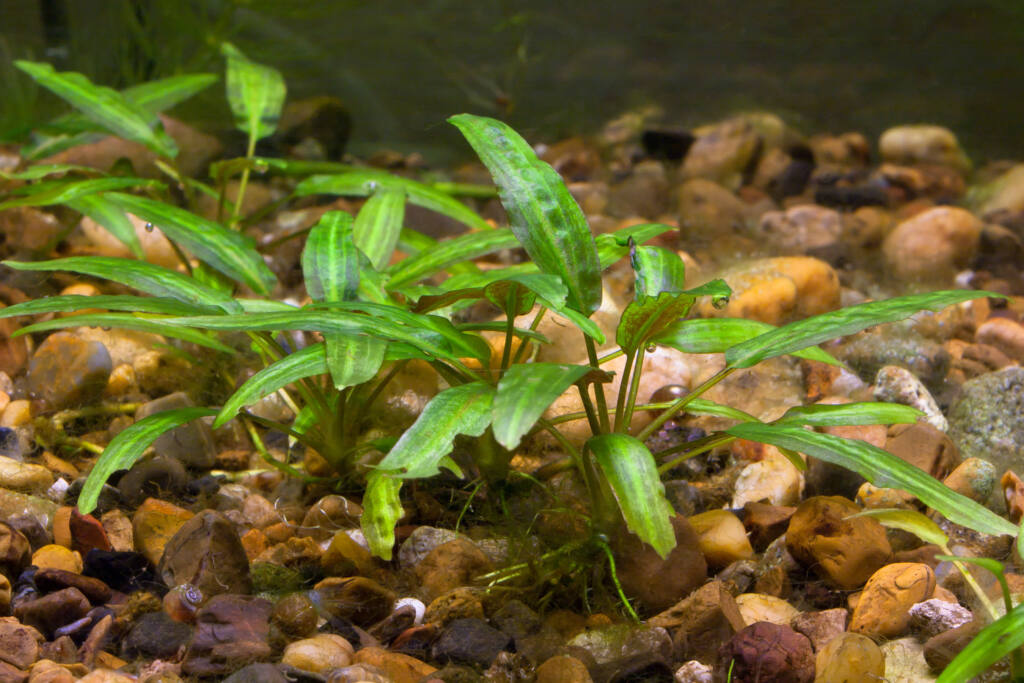
Quick Info: This incredibly diverse family of plants ranges in size, color, and care needs
Type: Rosette
Light Needs: Low to Medium (dependent on species)
Growth Rate: Slow
Commonly referred to as “crypts”, cryptocorynes are one of the most recommended plants for hobbyists new to planted tank. Many varieties of crypts, such as Crypt wendtii, are known for their hardiness and can be kept in a tank with low lighting and no added CO2. However, it is important to note that certain species can be extremely difficult to care for, and you should consult with one of our aquatic experts to ensure that you are selecting a species that is compatible with your tank.
Sizes on this family of plants vary widely. Some of them grow to a scant two inches, which makes them ideal for foregrounds, while others grow to more than a foot! They also come in an array of colors, including traditional grass green, browns, reds, and even bright pink!
Sagittaria
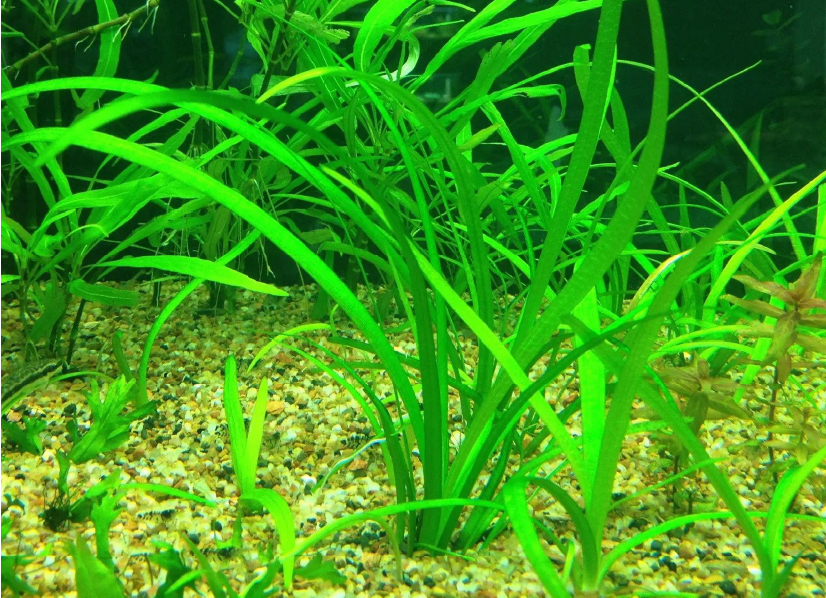
Quick Info: This thin-leafed plant is renowned for its hardiness; able to survive under any temperature or light conditions!
Type: Rosette
Light Needs: Low to Medium
Growth Rate: Fast
Sagittaria may look delicate with its long, thin leaves, but don’t be fooled – this little plant is quite tough! This low-maintenance plant can grow in nearly any conditions; soft or hard water, anywhere from 68-82°F, and with little need for additional fertilizers or CO2. More than this, when placed in nutrient-rich substrate, they replicate quite quickly, sending out runners to create new offshoots. In this way, an aquarium can achieve a robustly planted appearance in just a few short months! It can be housed in anything from a nano tank to an extra-large one, making it a nearly universally-popular plant.
Anubias (eg, Anubias Barteri)
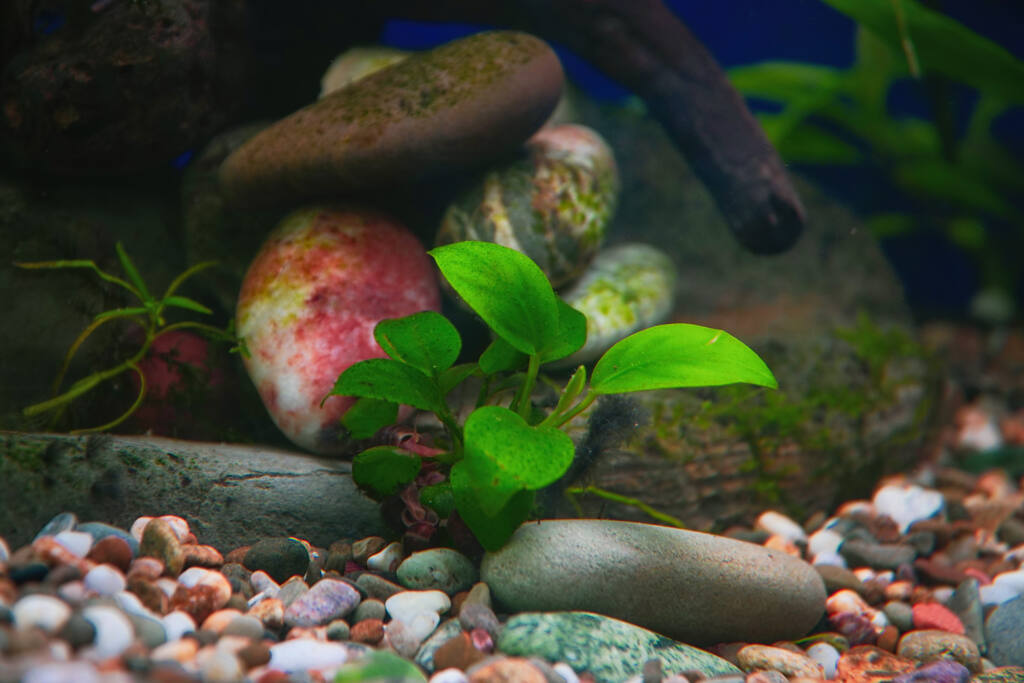
Quick Info: Because they thrive in the shade, they are named for Anubis, the Egyptian god of the underworld.
Type: Rhizome
Light Needs: Low
Growth Rate: Slow
Despite being named after a god of death, these plants are pretty hard to kill! Anubias can survive at a variety of water conditions. The two main considerations that novice owners should keep in mind; first, that too much light can cause algae to grow on their leaves, and second, that their rhizome must not be buried under substrate. To avoid this altogether, consider attaching them to wood, rocks, or other pieces of hardscape using fishing wire or superglue. They range from dark green to white (though white anubias varieties are rare and expensive) and also have variegated varieties. Anubias can also survive being emersed, which means that they can be incorporated into paludariums or terrariums as long as they are kept damp.
Java Fern

Quick Info: Fish love to swim through this jungle of large, leathery leaves.
Type: Rhizome
Light Needs: Low
Growth Rate: Slow
These robust, leafy plants are another one of the most common plants for planted tanks! Java ferns, which hail from Southeast Asia, have large green fronds and a leather-like texture. Not only does this add visual interest to your tank, but it means that they can stand up to some more rambunctious fish species. They also reproduce quite easily. Instead of seeds, they grow little plantlets that will eventually fall off and will be ready to plant as new java ferns. Because a mature java plant is over a foot tall, they are not recommended for tanks smaller than 10 gallons.
Java Moss

Quick Info: This bright, fluffy plant is perfect for new tanks or for small creatures to hide.
Type: Moss
Light Needs: Low
Growth Rate: Slow
Java Moss is incredibly popular option for creating beautiful aquascapes. Since it’s tolerant of low light, it can be used virtually anywhere in your tank – from a lush foreground carpet to attaching it to rocks to creating underwater bonsai “trees.” Java moss will even grow happily free-floating! It has no roots, but can sprout filament-like rhizoids to anchor them. Java moss is compatible with nearly any tank, but is especially favored by aquarists keeping shrimp or intending to breed their fish because it provides a safe space to lay eggs and for the fry to grow. This low-maintenance plant will thrive with good water quality and enough light, and is extremely difficult to kill.
Vallisneria
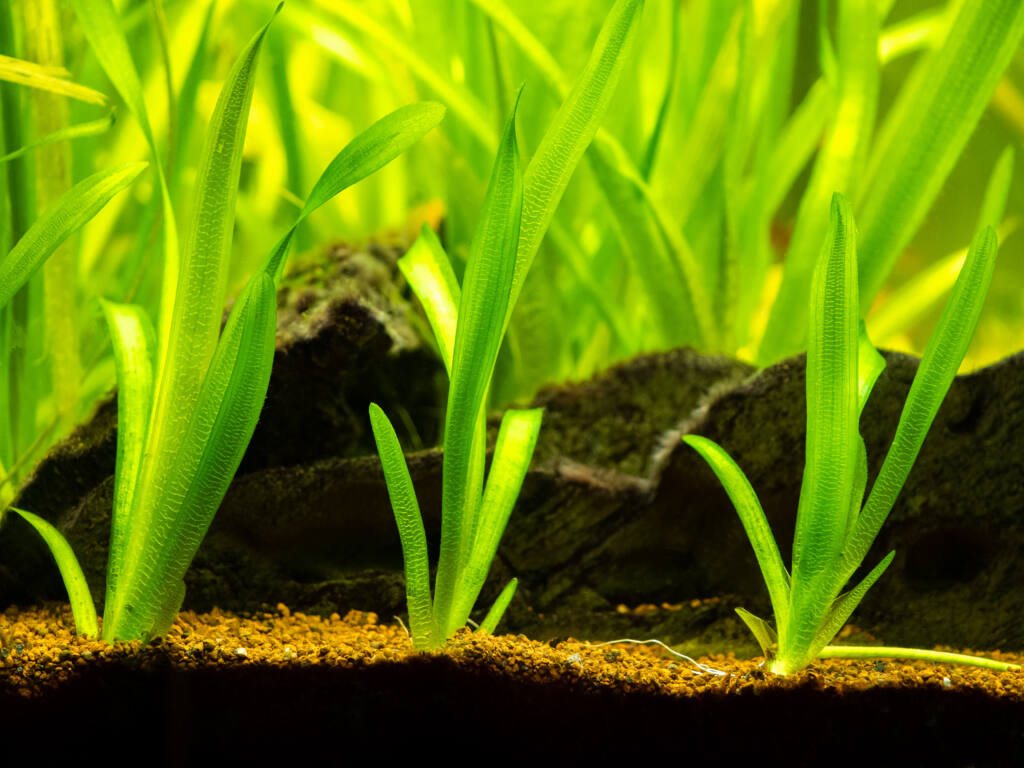
Quick Info: These may also be known as tapegrass, eelgrass, or simply “vals”
Type: Rosette
Light Needs: Low to moderate
Growth Rate: Moderate to fast
The Vallisneria is another attractive and sturdy plant that is favored by beginner aquarists. Some varieties are commonly confused with saggitaria, and it is not difficult to see why. Both of these plants are long and slender, both are rosette plants that reproduce in nutrient-rich substrate using runners, and both are commonly recommended for new tanks. Vallisnerias are slightly flatter than the sagittaria family. Additionally, vallisnerias have small, jagged structures like teeth along the edge, while sagittarias are smooth. That said, they are quite similar in their care needs, and both make an excellent background plant. Just be careful not to plant them at the front of your aquarium – jungle vals are the most common variety, and they can grow up to 6 feet tall!
Amazon Swords
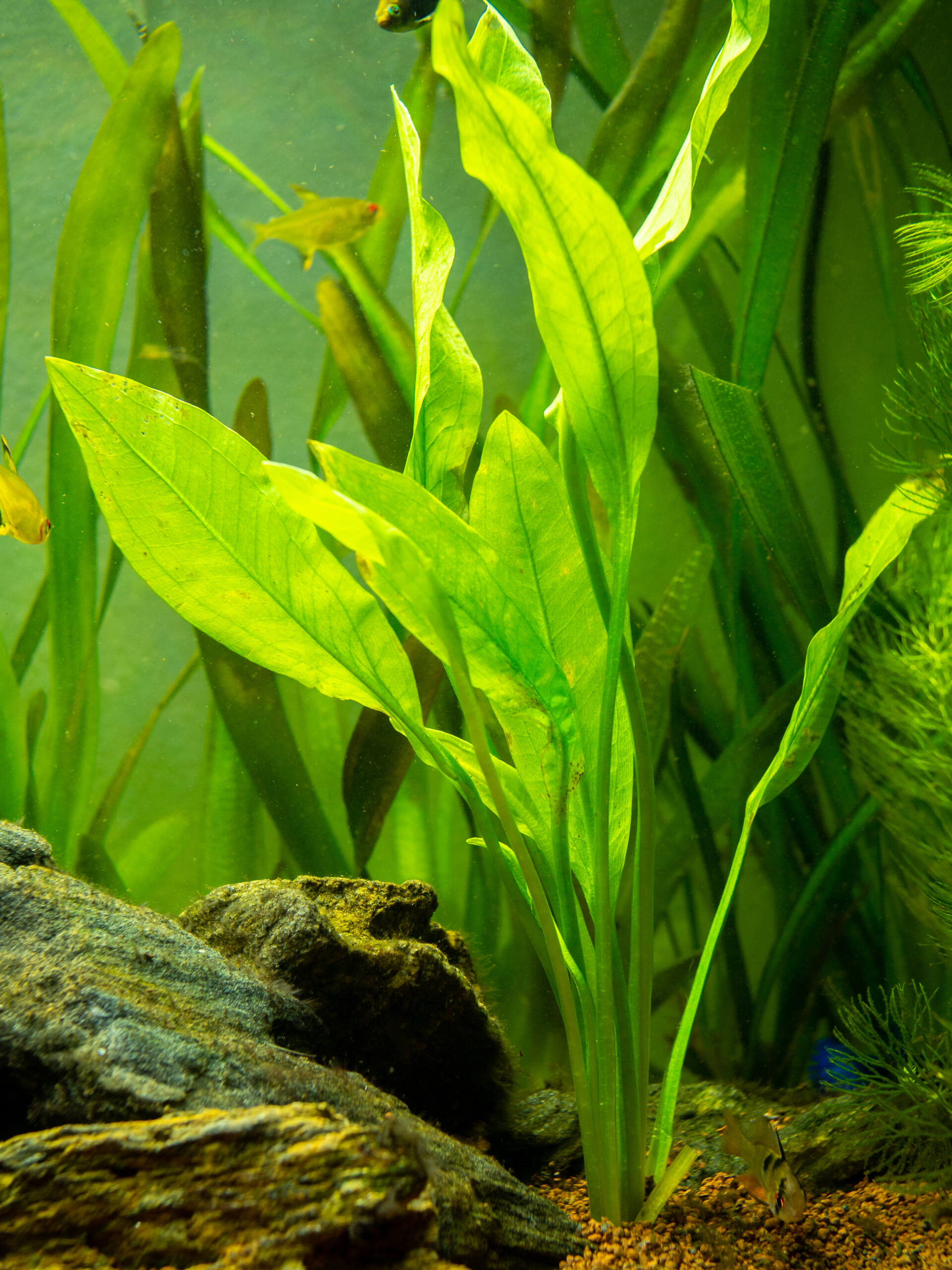
Quick Info: This plant will do best in loosely-packed substrate due to its thick root system
Recommended For: Beginners
Type: Rhizome
Light Needs: Moderate
Growth Rate: Slow to Moderate
As their name suggests, Amazon Swords hail from the Amazon River – and as one may associate with the Amazon, they create quite a jungle! These lush green plants are a beautiful focal point for tanks. Their leaves, which are thin near the root, grow wider, then taper to a point resemble swords. They do not grow especially quickly and do not need much maintenance in terms of trimming, but with enough time these can reach a length of approximately 12”. It is worth noting that their large, attractive leaves can be very delicate, so this plant would do best in tanks without a penchant for uprooting or eating plants!
Mermaid Weed
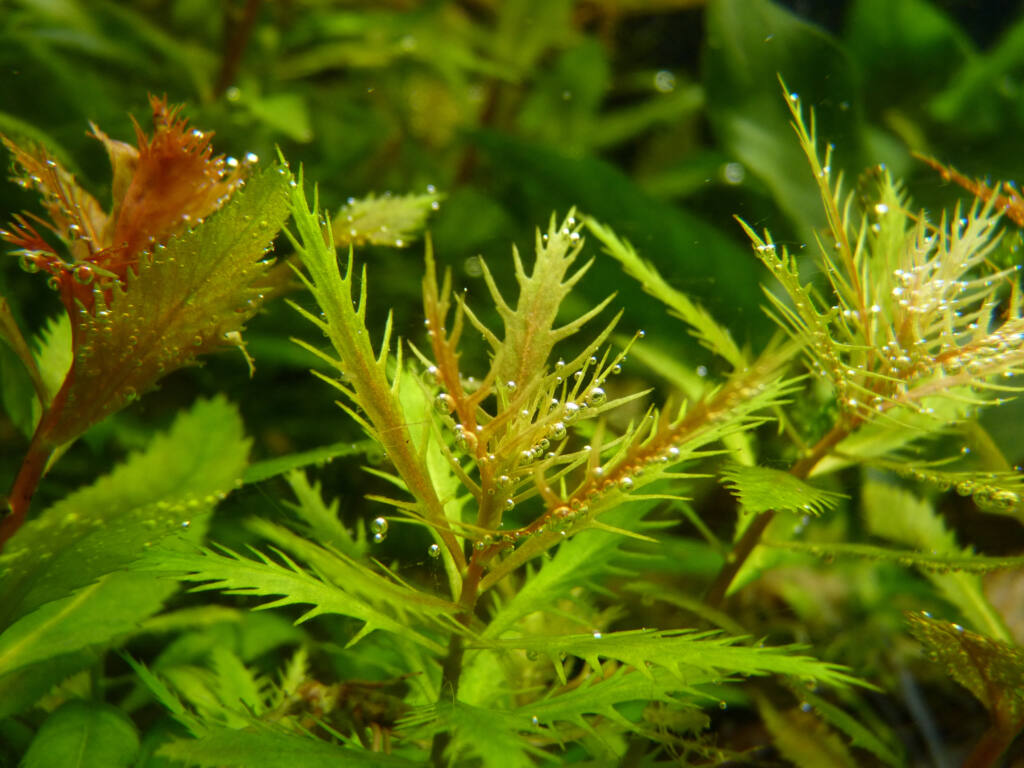
Quick Info: As a stem plant, propagating this plant is quite easy!
Type: Stem Plant
Light Needs: Moderate to high
Growth Rate: Slow
Mermaid weed, also known as proserpinaca palustris or sawtooth hygro, is a striking plant that can add visual texture and color to your tank. Their color ranges from greenish to an orange-red, with a deeper red color indicating that the plant is healthy and happy. The size of their leaves also varies based on where they are planted; in tanks with supplemental CO2, they grow wider and appear blade-like, while a “low-tech” tank they will more resemble needles. In addition to aquariums, mermaid weeds make good additions to ponds or paludariums. While beginners can keep these plants, they are generally recommended for more experienced aquarists.
Water Sprite
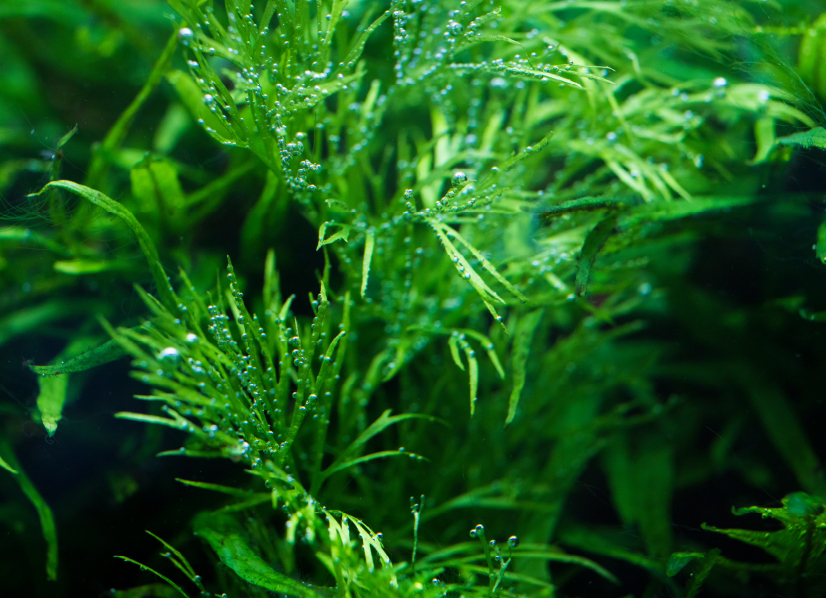
Quick Info: Immersed or emersed, rooted or floating, these plants are happy just about anywhere, as long as have sufficient light!
Type: Stem
Light Needs: Moderate
Growth Rate: Fast
Water Sprite’s genus name, ceratopteris, comes from Latin words keras, meaning horn, and pretis which means fern. This is an apt description of the plant itself. These bright green plants have long, feathery leaves that branch off from a central stem, and grow up to appear bushy and fern-like. They may also be referred to as water ferns or Indian ferns. Because of their delicate leaves, it is best not to pair them with rowdy fish, and keep them far away from powerful filters. The shade that they provide can help shy fish feel comfortable, and they are a great match for shrimp. Water sprite grows quite quickly, so be prepared to give it nutrients to match and trim it every now and again.
Anacharis
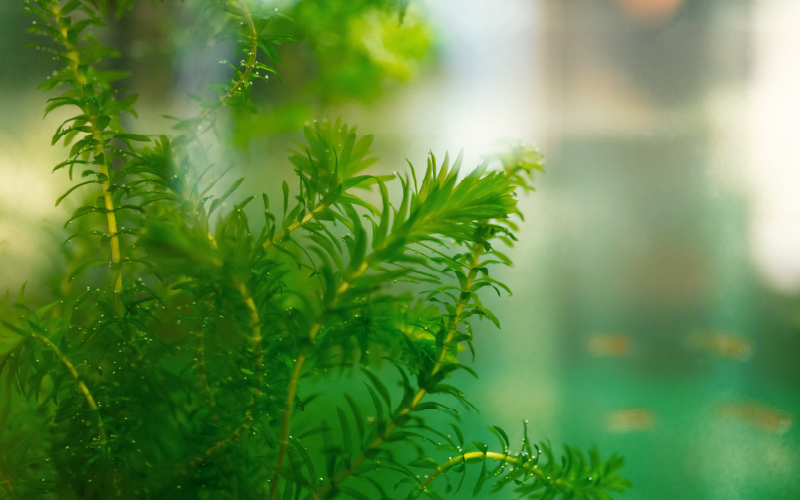
Quick Info: These plants are otherwise known as Brazilian Waterweed or Elodea
Type: Stem
Light Needs: Moderate
Growth Rate: Very fast
Anacharis is one of the most recognizable aquarium plants and where many choose to start when they wish to keep a planted tank. This plant grows a vivid green, and rather than a plant with multiple stems splitting off, it consists of a single central stem with nodes of leaves growing along the entire length. These plants grow extremely fast – so fast that they are considered invasive in some other parts of the country, so be careful! Much like water sprite, it can grow either in substrate or free floating, and are very hardy plants able to adapt to most conditions. Just make sure you have the tools to trim this plant back lest it take over your whole tank!
Scarlet Temple Plant
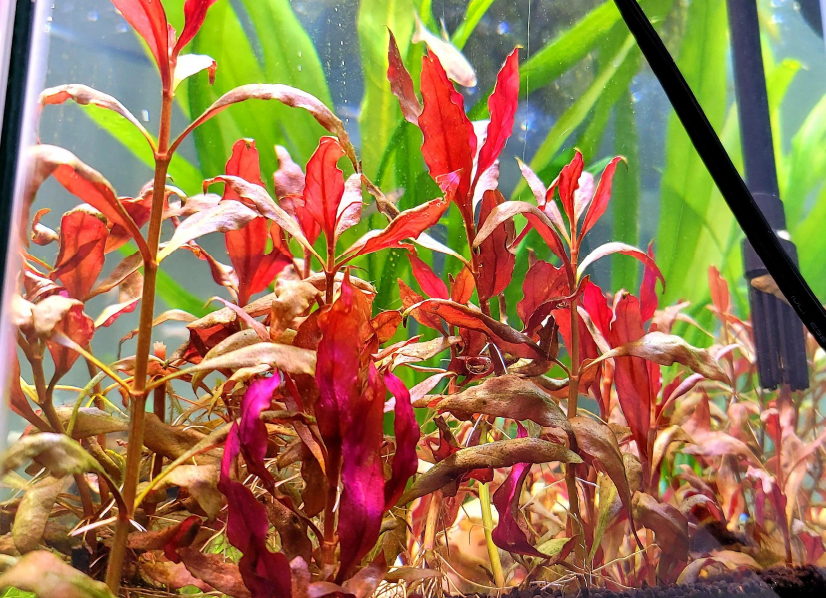
Quick Info: You may hear these plants referred to as “AR”s – short for their scientific name, Alternanthera Reineckii.
Type: Stem
Light Needs: Moderate to High
Growth Rate: Slow
As their name suggests, Scarlet Temple Plants can bring a pop of red to your tank! Their leaves range from greens, pinks, reds, and even purples. The more lighting that this plant receives, the deeper its coloration. It can be placed anywhere in the tank, but be aware if placing in the foreground that it will need to be strategically trimmed to encourage carpeting, as on its own it can eventually grow to 10-20 inches. CO2 is not needed for this plant, but it will aid in growth and overall appearance.
Ludwigia
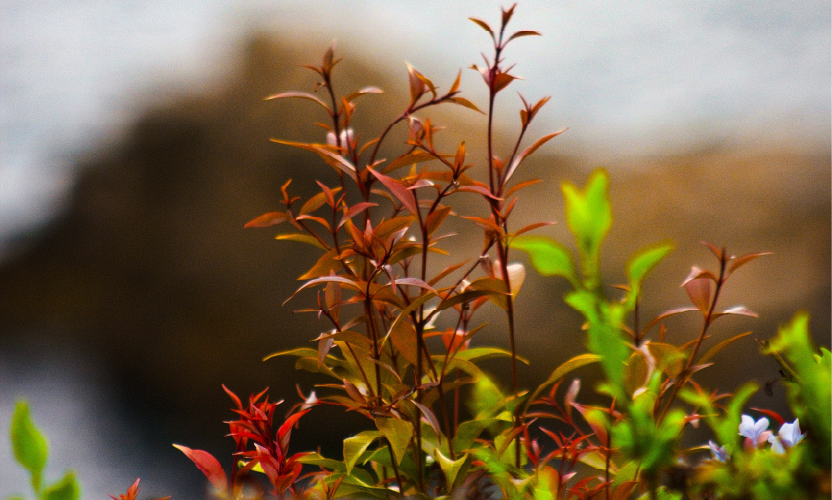
Quick Info: If tall enough, these plants grow small yellow flowers above the surface
Type: Stem
Light Needs: Moderate to High
Growth Rate: Moderate to Fast
The Ludwigia family includes Ludwigia Repens and Ludwigia Palustris. Much like the Scarlet Temple Plant, they are known for their red leaves, of varying intensity depending on species and the conditions of the water. Also like the Scarlet Temple Plant, they need a significant amount of light to display their best coloring. Their oval-shaped leaves are green on the top and red on the bottom and create a lovely contrast with other plants. It can survive at most water hardness levels, but thrives in softer, slightly acidic environments. They can be delicate and will do best in tanks without plant-eating fish.
Pogostemon Quadrifolius (Octopus)
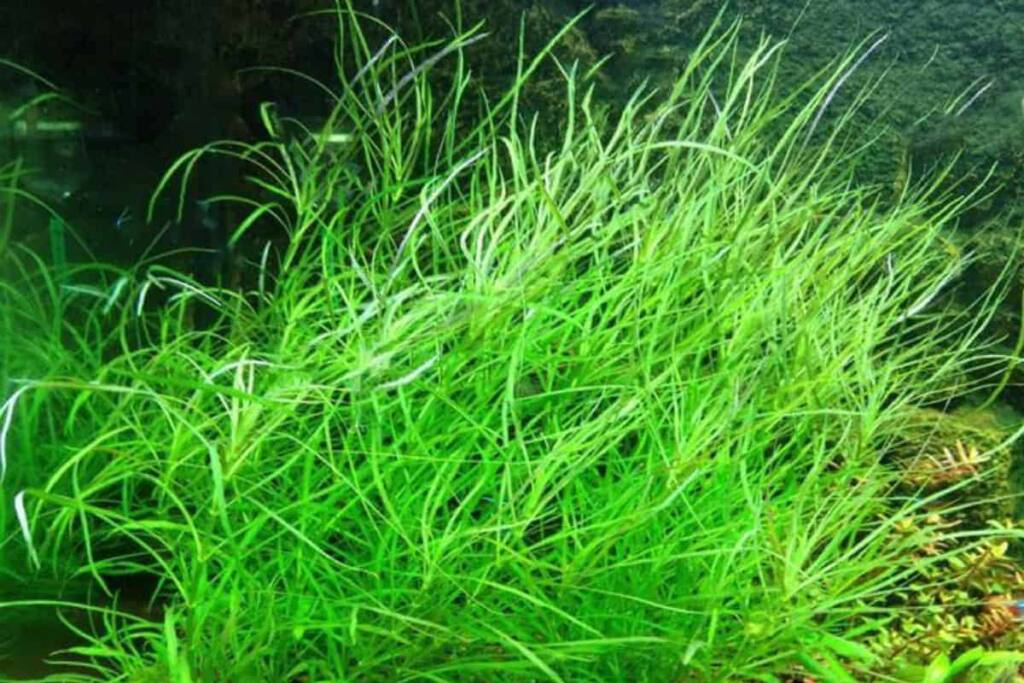
Quick Info: This plant is often used for its medicinal properties in India
Type: Stem
Light Needs: Moderate to High
Growth Rate: Fast
Pogostemon Quadrifolius is most known as the Octopus Plant, and the reasoning is clear when looking at them. They feature wispy, almost grass-like leaves that move in the current like octopus arms. They are closely related to posgostemon stellatus, and until recently were classified as the same plant. It is not uncommon to see this similar cousin also frequently referred to as a “pogostemon octopus” – but beware! Posgostemon Stellatus needs much more intensive light, and CO2 is strongly recommended to grow well, while Quadrifolius can survive as long as it has sufficient nutrients.
Rotala
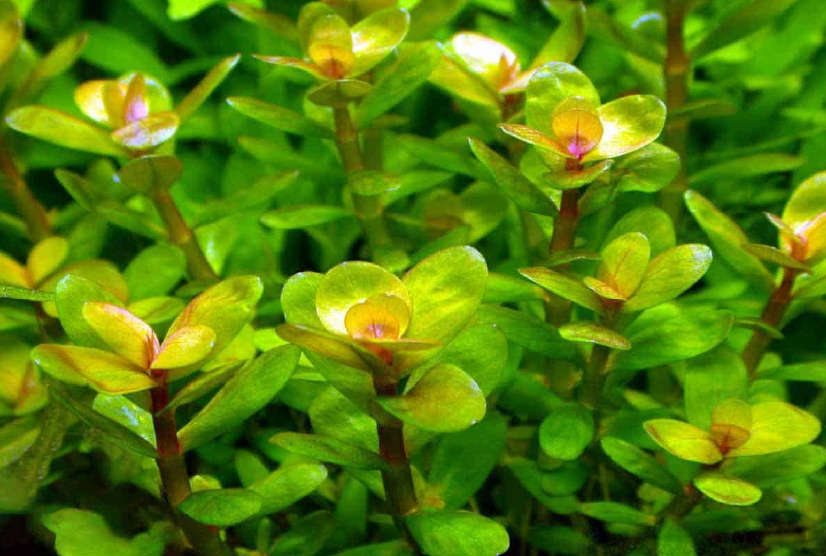
Quick Info: One variety of rotala, the Rotala rotundifolia, means “plant with round leaves” – but when grown submerged, their leaves are pointed!
Type: Stem
Light Needs: Moderate to High
Growth Rate: Moderate
Rotalas have an assortment of species with quite a broad range of needs. From the rotala rotundifolia, which is comparatively low-maintenance, to the rotala wallachi, beautiful and notoriously finicky. Most rotala need a great deal of light, nutrients, and supplemental CO2 to survive, so make sure that your tank is prepared accordingly. Even the hardiest of rotalas can rot when exposed to unstable conditions, so this is not an ideal choice for an unestablished tank. Their colors can vary, from all shades of green, orange, pinks, and reds, as can the shapes of their leaves. All varieties will require regular trimming so as not to dominate the aquarium.
Whatever your goals are for your aquarium, we at the Ocean Floor are always happy to help guide you! Stop in any time and ask our experts about getting started with a freshwater planted tank. In no time you’ll be with filling your tank to the brim with some of the best freshwater plants for beginners and all levels!

